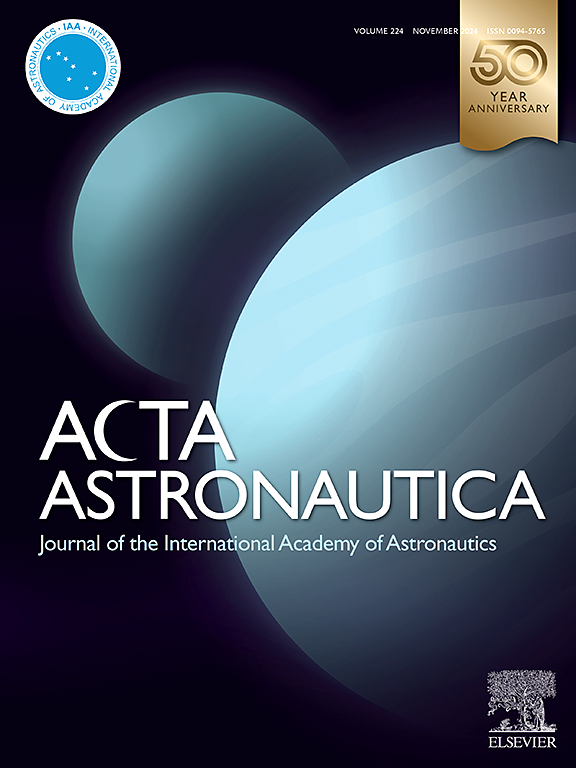行星保护交易和从设计火星样本返回的捕获、遏制和返回系统中学到的经验教训
IF 3.1
2区 物理与天体物理
Q1 ENGINEERING, AEROSPACE
引用次数: 0
摘要
本文描述了在2023年12月之后开始重新架构研究之前,作为火星样本返回活动的一部分,在执行捕获、遏制和返回系统的初步设计时所进行的交易和吸取的教训。“火星样本返回”是一项将火星岩芯、风化层和大气样本装在密封管道内带回地球的努力。这些样本的重要性在于,它们有可能提供有关火星地质和气候演变的宝贵信息,火星过去可能存在生命的能力,以及火星环境对未来人类探索构成的风险。本文中提出的交易和经验教训是针对落后的行星保护要求对有效载荷设计施加的限制而产生的初步设计解决方案,这些要求要求保护地月系统免受返回的火星物质可能造成的任何潜在负面影响。主题包括抛弃有效载荷捕获外壳,用紫外线照明系统替换无菌转移系统,以及利用不同的设计选项来增强微流星体保护系统以提高屏蔽性能。本文章由计算机程序翻译,如有差异,请以英文原文为准。
Planetary protection trades and lessons learned from designing Mars Sample Return’s Capture, Containment, and Return System
This paper describes the trades carried out and lessons learned while performing the preliminary design of the Capture, Containment, and Return System as part of the Mars Sample Return campaign, before the re-architecture studies initiated after December 2023. Mars Sample Return is an effort to bring to Earth rock cores, regolith, and atmospheric samples from Mars inside sealed tubes. The importance of these samples lies in their potential to provide valuable information about Mars’ geological and climate evolution, its potential ability to have harbored life in the past, and the risks posed to future human exploration by the Martian environment. The trades and lessons learned presented in this paper refer to the preliminary design solutions generated in response to the constraints levied on the payload design by backward planetary protection requirements, which impose the protection of the Earth–Moon system from any potential negative effects the returned Mars material might cause. Topics include jettison of the payload capture enclosure, replacement of the aseptic transfer system with an ultraviolet illumination system, and leveraging different design options to augment the micrometeoroid protection system to improve shielding performance.
求助全文
通过发布文献求助,成功后即可免费获取论文全文。
去求助
来源期刊

Acta Astronautica
工程技术-工程:宇航
CiteScore
7.20
自引率
22.90%
发文量
599
审稿时长
53 days
期刊介绍:
Acta Astronautica is sponsored by the International Academy of Astronautics. Content is based on original contributions in all fields of basic, engineering, life and social space sciences and of space technology related to:
The peaceful scientific exploration of space,
Its exploitation for human welfare and progress,
Conception, design, development and operation of space-borne and Earth-based systems,
In addition to regular issues, the journal publishes selected proceedings of the annual International Astronautical Congress (IAC), transactions of the IAA and special issues on topics of current interest, such as microgravity, space station technology, geostationary orbits, and space economics. Other subject areas include satellite technology, space transportation and communications, space energy, power and propulsion, astrodynamics, extraterrestrial intelligence and Earth observations.
 求助内容:
求助内容: 应助结果提醒方式:
应助结果提醒方式:


